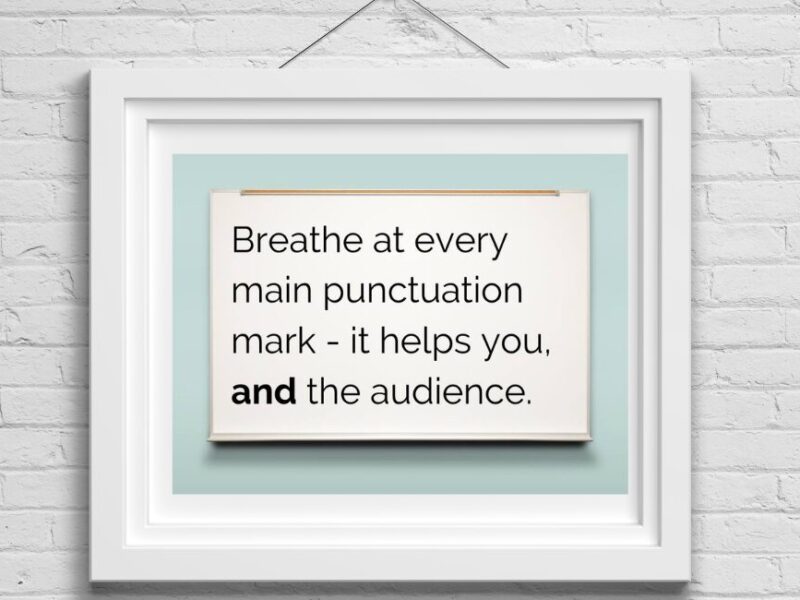Our ideas are only as good as our audience’s ability to consume and digest them. Whether that audience is 1 or 10,000.
Let that really sink in for a moment. If that statement is true – and I believe it is – then our ability to communicate so that the audience hears us and “gets it” is even more important than we might realise.
Great communication is about creating shared understanding.
Would you agree?

I often say that good public speaking – for example – is not about us, it’s about our audience. And that our delivery needs to include ‘reflection time’ for our listeners, rather than more ‘rabbiting time’ for us!
We understand this in theory, but it’s quite hard to do, because often when we speak to a group it feels like we’re giving a monologue.
And it’s really hard to add reflection time and stop rabbiting if you’re nervous and just want the whole thing to be over!
Ideally, we’re actually still having a conversation – even if the audience doesn’t say one word. There’s two-way dialogue happening: it just happens to be internal from the audience’s perspective.
An example for you:
To come back to my opening idea about wanting our audience to be able to consume and digest our content…let’s flip it: you’re now in the audience, waiting for your ‘content’ from the speaker.
One step further to imagine: now you’re in the audience, and there’s no speaker…you’re waiting for a meal to arrive. The head chef has spent hours carefully designing the menu and cooked interesting and delicious food.
Then the wait staff rush to bring all the courses out one after the other. No gaps, no time to admire how the plate looks, and savour the different flavours.
Oh, and there’s some really fast-paced music playing in the background, to give an even greater sense of urgency to the whole meal (you get the idea!).
You wouldn’t be able to fully understand or appreciate what had been served to you.
It’s the same when you communicate.
To communicate your good ideas effectively often takes time, thought and even careful crafting. And time is in short supply for many people…so it’s important to be strategic about the lengths you go to. But some lengths there must be…if you have ideas that need to land with your listener.
I’m going to suggest three ways to create the right conditions, and enable this to happen. And of course you’ve heard these before: they’re common sense.
But they don’t always happen, and being reminded is always a good idea:
- Simple. Keep your messages simple and clear – in our concern not to ‘dumb down’ our ideas we can often make them too complex or wordy.
- Succinct. Keep it brief!
- Spacious. Allow space and time for your ideas to land. In other words, pause. Pause long enough to see that you idea has landed.
How do you create the best environment for your ideas to be consumed and digested? For good public speaking, how do you let your points land?




